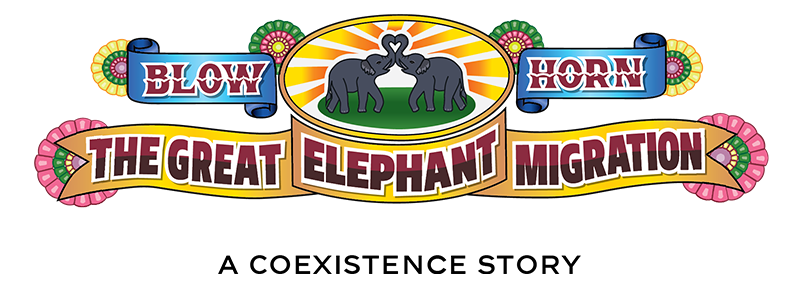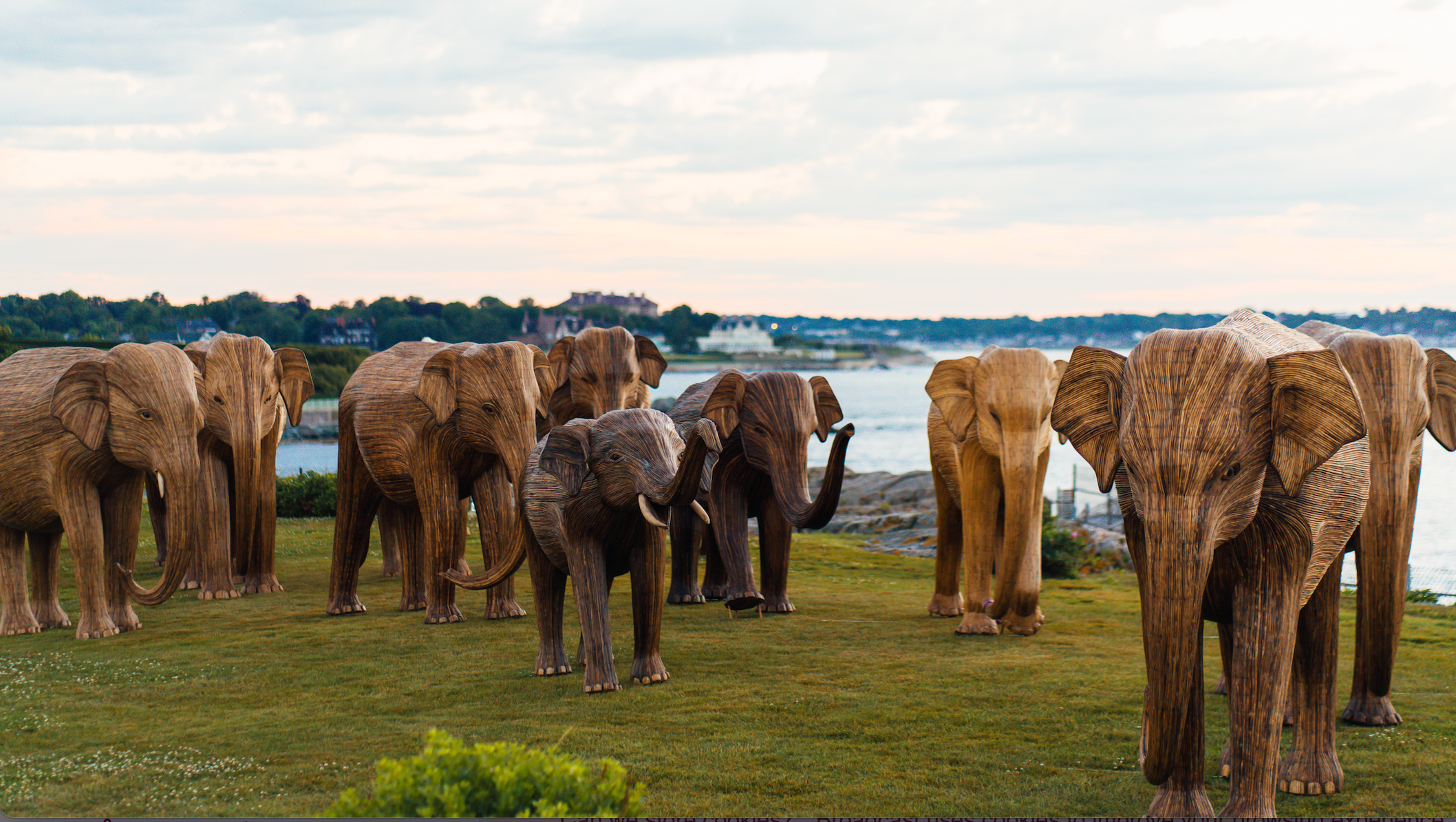INDIA IS GLOBAL CONSERVATION MIRACLE.
India's elephants are inspiring compassionate coexistence with other species wherever they tread.
In the last 30 years the population of India has doubled to 1.4 billion. Remarkably, the population of elephants, rhinos, lions and tigers has also doubled over this period. They coexist in extraordinary ways, tolerating each other and constantly negotiating space.
India’s elephants are flagships for coexistence with 80% of their range outside of Protected Areas. In Gudalur, in the Nilgiri Hills, 150 elephants share space with a quarter of a million people. Humans and elephants share the same land, food and water, but still find ways to live alongside each other relatively peacefully.
A range of beliefs and practices emphasize respect and reverence for nature. India’s ancient cultures go hand in hand with a range of modern technologies, from smart fences to AI based monitoring systems. Their remarkable relationship with wildlife is ultimately down to a collective empathy for other living beings at a national scale.
All funds raised through the The Great Elephant Migration will be directed to projects that protect biodiversity and enable people and wildlife to share space.
LANTANA CAMARA
The elephants are made from lantana camara, one of the world’s top invasive weeds. This fast growing shrub has a stranglehold on 300,000sq. kilometers of India’s Protected Areas. Lantana pushes animals out of their forest homes into urban areas, leading to an increase in human-wildlife conflict. The use of lantana to create the elephants helps remove the weed from protected areas, leaving wildlife more space to roam.
THE REAL ELEPHANT COLLECTIVE
Each elephant has been created by The Real Elephant Collective, a community of 200 indigenous artisans from the Bettakurumba, Paniya, Kattunayakan and Soliga communities of India’s Nilgiri Biosphere Reserve, Tamil Nadu. The collective has spent the past five years beautifully bringing to life every elephant they live alongside, in intricately detailed sculptural form. Like many Indigenous cultures around the world, these communities have intimate knowledge of nature and wildlife, based on generations of observation and experience.
The Kattunayakans
The Kattunayakans live throughout the two districts in the Nilgiri Hills, across 44 settlements. They are the most forest dependent of all the communities, as is implied by their name: Kattu (forest) Nayakans (rulers). Traditionally hunter-gatherers, and skilled honey collectors, they have a rich knowledge of forest systems and resources.
The Bettakurumbas
The Bettakurumbas are one of seven Kurumba groups in the Nilgiri area. Like the Kattunayakans, they were traditionally hunter-gatherers, and are known for their elephant handling expertise, with many working as mahouts.
The Paniyas
The Paniyas are the largest tribe in the region. They have faced a long history of marginalization and have traditionally been associated with
agricultural activities, often as laborers on farms and plantations.
The Soligas
The Soligas have a deep connection to the forest, which is integral to their cultural and spiritual identity, whilst the sale of foraged forest produce provides a livelihood for many.
Dr Tarsh Thekaekara
Tarsh lives in the Nilgiri Hills and is involved in two main areas of research and conservation action – better integrating human-elephant spaces and better managing invasive species, particularly Lantana Camara. Tarsh holds a PhD in human-elephant interactions from The Open University and an MSc in Biodiversity, Conservation and Management from The University of Oxford. As a conservationist researcher he spans multiple institutions - a co-founder and trustee of The Shola Trust, a director of The Real Elephant Collective, a working group member of the Coexistence Consortium, and faculty at the Centre for Human-Wildlife Coexistence at the Transdisciplinary University.
Ruth Ganesh
Ruth is a creative conservationist who conceptualized and produced The Great Elephant Migration. Her speciality is imagining and delivering major public art events around the world, which have raised more than $20 million for wildlife corridors and human-wildlife coexistence projects to date. Awards include Best Cultural Attraction, Most Innovative Fundraising Campaign and multiple Guinness World Records. She is a co-founder of The Great Elephant Migration, Trustee of Elephant Family USA, Chair of the Development Board for Pangea Trust and co-founder of the new environmental arts body, Platform Earth.
Shubhra Nayar
Shubhra is designer for performance, visualising and creating for mainstream theatre, dance and life-size puppetry. Her close association with the Nilgiri forests and her fascination with the distinct forms of wild elephants, has helped develop her expertise in creating life-size forms elephant sculptures. With a degree in Textile Design from the prestigious national Institute of Design in Ahmedabad, India and an MA in Theatre Design from the Royal Welsh College of Music and Drama, in the UK, Shubhra’s anatomical sketches for the elephants encapsulate the individual in each elephant, weaving innate nature with grand form.
Subhash Gautam
Subhash's passion is to work with rural communities to establish enterprises that empower them to engage with the market economy on their own terms, rather than simply being passive participants in the global system. He helped build a producer company for women SHG members in Kerala and Odisha and set up retailing models of their farm produce. With The Real Elephant Collective, he has been instrumental in building the 150-strong team of elephant makers, creating a sense of pride and self-worth, while gaining an income well above the local and national average, working as independent entrepreneurs and agents of social change.
carbon footprint
The delivery of The Great Elephant Migration is carbon neutral. It supports a large-scale initiative to shred vast areas of invasive Lantana, the weed the elephants are made with, from India’s Protected Areas and convert it into biochar. By the end of 2025, we will have sequestered 2,625 tons of carbon through this effort. The total estimated carbon emissions for the creation, shipping and transportation of the herd is in the region of 275 tons. A complete carbon emission and sequestration audit will be published at the end of the migration.
ABOUT OUR LOGO
Our logo and brand motifs were designed by celebrated Indian truck artists from Tamil Nadu. Lorry painting is a type of folk art – one of the expressions of India so loved by visitors to this magical country. This traditional practice combines bright, elaborate paintings and decorative motifs. Styles vary across regions with artists often incorporating animals in bold celebratory colours, reflecting India’s collective empathy towards the natural world. These unique trucks are a quintessential part of Indian culture, captivating the attention of onlookers as they travel across the country, just as the elephants will during their Great Migration from East to West Coast.
Photography from India throughout our website was captured by award-winning fine art photographer Michael Turek. Our branding was designed by global creative director, Marsha Meredith.
The elephants await your arrival. Come and walk amongst the herd, feel their majesty and peacefulness. Listen to the birdsong in the trees and be part of their ancient world. Stand with the matriarchs leading their families, touch their immense forms and be touched by them. The planet is our home, and theirs. The herd is here to tell their story of coexistence; that there is room for all of us on this planet. We hope this exhibition reminds us of the awe we feel when in the company of wild, free animals and inspires us to better share our world with them.
RUTH GANESH & SHUBHRA NAYAR






